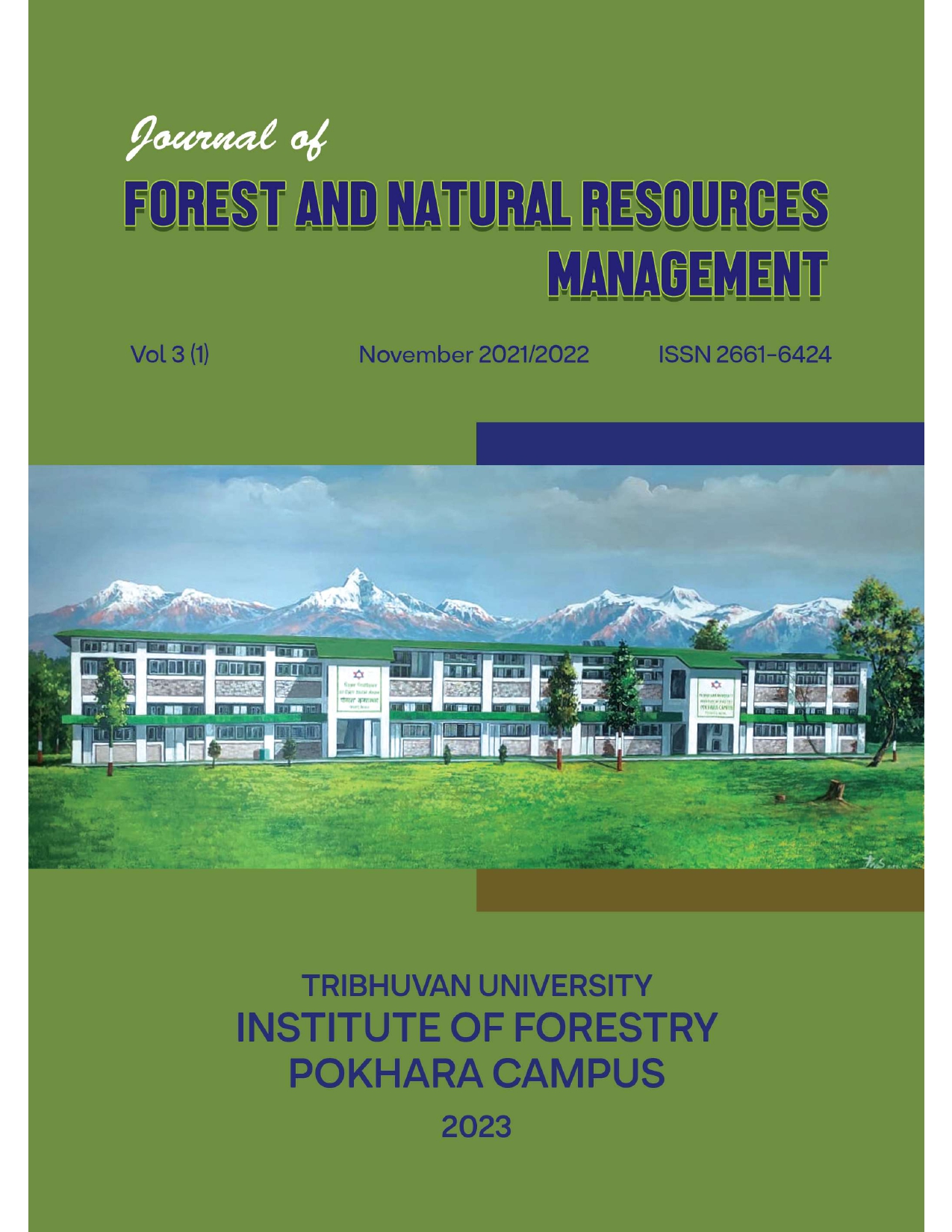Soil Erosion Analysis Using GIS and RS in Makawanpur District, Nepal
DOI:
https://doi.org/10.3126/jfnrm.v3i1.60110Keywords:
Soil erosion, GIS, RUSLE, sustainable land managementAbstract
Although soil erosion is a common phenomenon and a serious hazard in many areas of the Makawanpur district, it is still challenging to estimate and assess the amount of soil erosion. This study investigates the distribution of soil erosion in the Makawanpur district using the Revised Universal Soil Loss Equation (RUSLE) and Geographic Information System (GIS). RUSLE model parameters were collected from various sources. Topography, rainfall, soil characteristics, and soil conservation techniques were considered in the study, among many other erosion factors. These variables were multiplied to determine the average soil loss. Based on the severity of the erosion, the final results of soil erosion rates were divided into six classes. Very serious class accounts for 11.31% of the land (>80 t h-1 yr-1), followed by severe which is 9.76% of the land with erosion rate rates ranging from (40-80 t h-1 yr-1), very high is 17.41% of the land with rates ranging from (20-40 t h-1 yr-1), followed by 16.38% of the land ranging from(10-20 t h-1 yr-1), and 9.32% of the land ranging from (5-10 t h-1 yr-1) and 35.83% of the land ranging from (0-5 t h-1 yr-1), fall under, moderate, low and very low severity zones respectively. The GIS-based soil erosion model is found to be a cost-effective method to estimate soil erosion as well as to identify priority areas for sustainable land management practices.
Downloads
Downloads
Published
How to Cite
Issue
Section
License
© Institute of Forestry, Pokhara Campus




